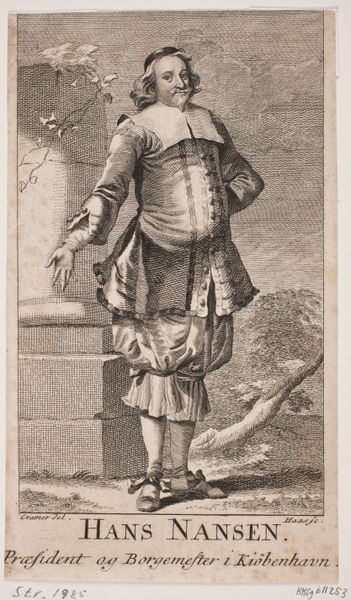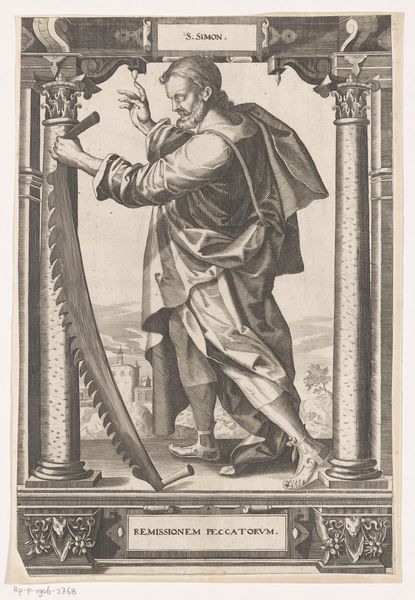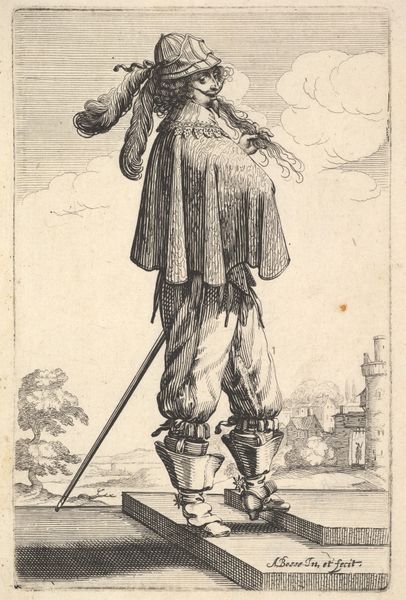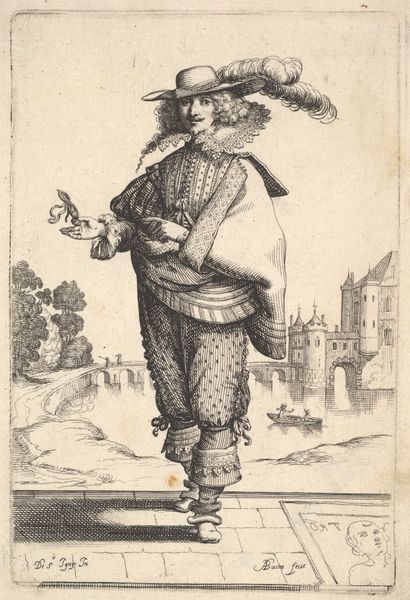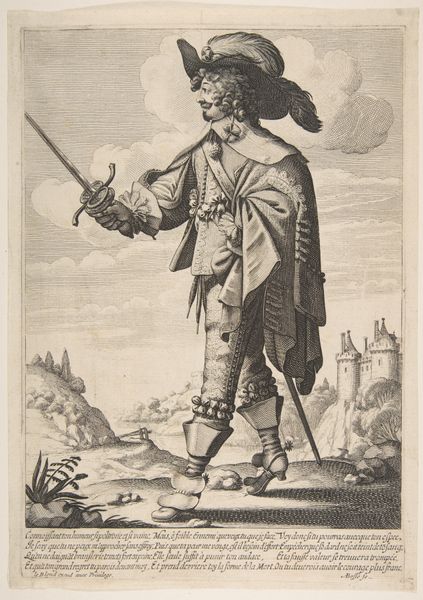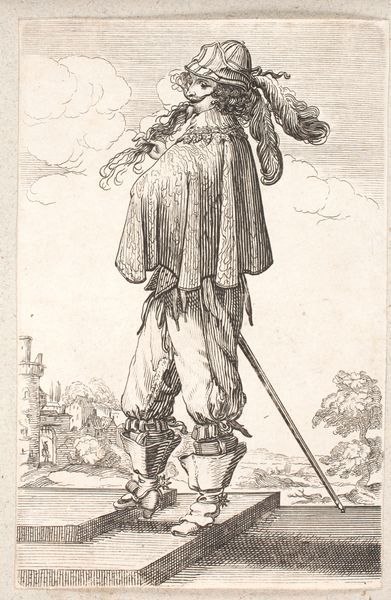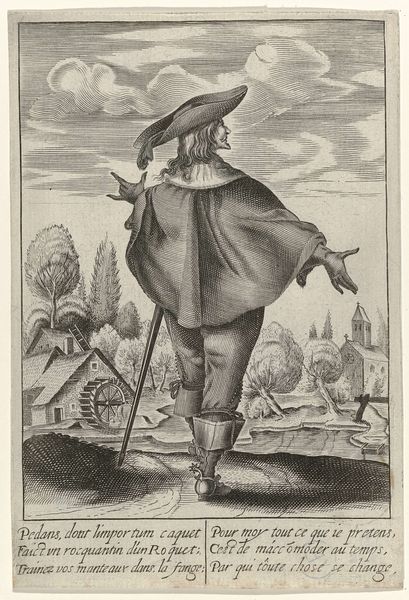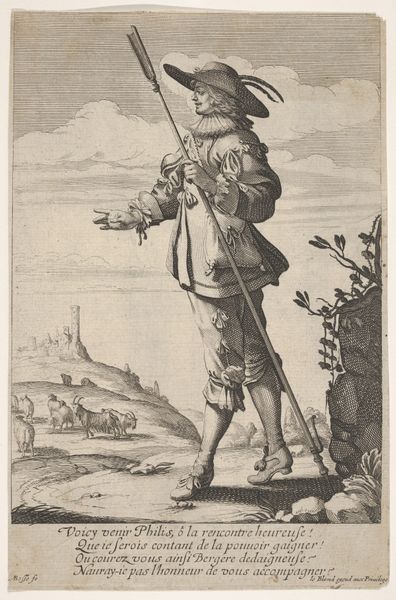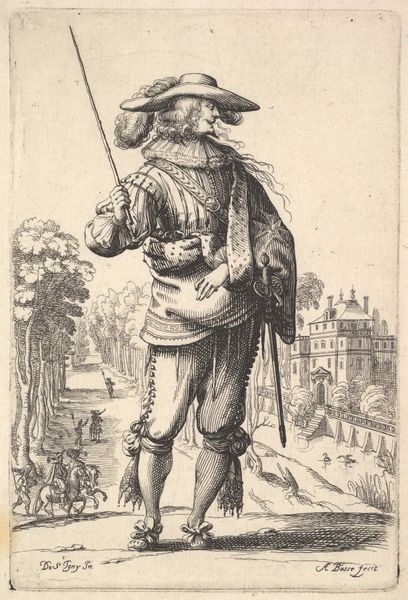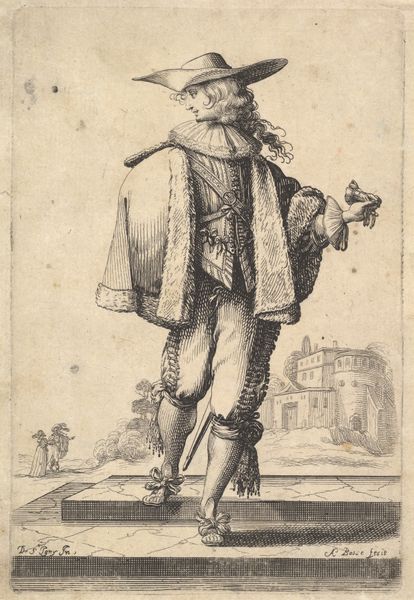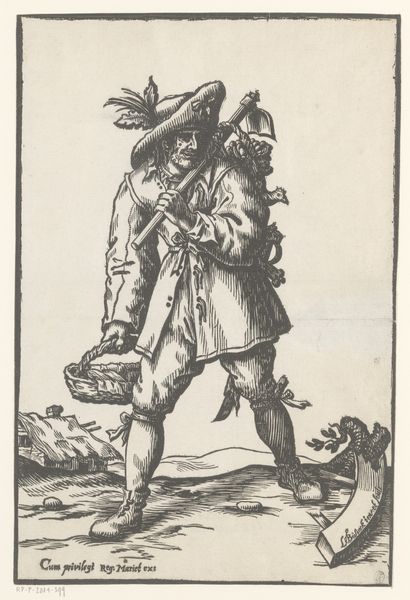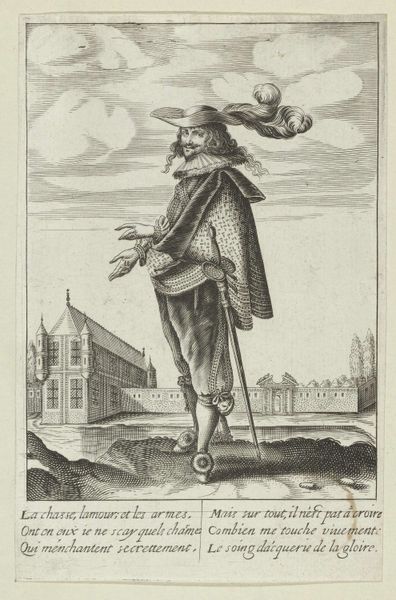
drawing, print, engraving
#
portrait
#
drawing
#
medieval
#
baroque
# print
#
old engraving style
#
figuration
#
men
#
line
#
portrait drawing
#
history-painting
#
engraving
Dimensions: Sheet: 11 7/8 × 8 3/16 in. (30.2 × 20.8 cm)
Copyright: Public Domain
Curator: Welcome. Before us we have an engraving, "Taste," created sometime between 1620 and 1660, attributed to Gilles Rousselet. It's currently housed at the Metropolitan Museum of Art. Editor: The figure's presentation certainly is mannered. The landscape in the background seems secondary to the imposing figure. It’s got a sense of authority and a heavy symbolic load. Curator: Precisely. Let’s consider this work in light of the sociopolitical context of 17th-century Europe. This figure of Mercury presents questions about the function of the artist and the image in power dynamics and class structures of the period. Mercury's attributes—his winged cap and sandals, his caduceus—are signifiers of communication, commerce, even deception, and they were charged symbols in this epoch. Editor: Indeed. The rendering and reproductive technology through etching is just as noteworthy. Printmaking allowed the commodification of art, serving an emergent bourgeoisie interested in displaying good taste while equally distributing ideas. Think about the process: the tools, the labor, the press… These images are, first and foremost, about material transformation and labor. This affects their interpretation. Curator: I concur that the role of printmaking expands social participation in art and information exchange. What makes the figure so remarkable is also the overt claim for education, cultivation, and perhaps civility, embedded within courtly and intellectual spheres. It asks important questions about access. Editor: Agreed. Let's remember that these figures, beyond symbolic meaning, are fundamentally crafted objects resulting from distinct labor conditions and consumption patterns of a nascent capital. That's crucial. Curator: Thank you, yes, focusing on the tangible history embedded in this engraving deepens its meaning significantly. Editor: Likewise, focusing on the ways access shaped dissemination and cultural expression can tell a richer story of production and how we participate.
Comments
No comments
Be the first to comment and join the conversation on the ultimate creative platform.
